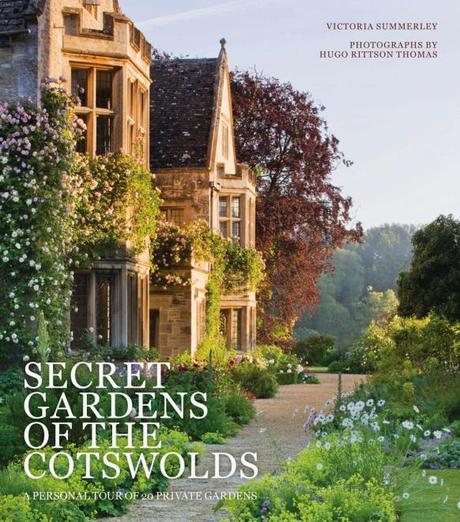
I am lucky to frequently receive books from Frances Lincoln to review but I have to admit that I was thrilled to be asked to review Secret Gardens of The Cotswolds written by my friend Victoria Summerley. I did tell Victoria some time ago when we were discussing her book that I wasn’t going to review it as I like to be honest and I would feel inhibited reviewing a friend’s book. However, when it came to it the offer was too good to refuse but I will try very hard to be impartial.
Victoria’s approach to the book, which is clearly articulated in the introduction, is quite simply what we all love to do, if we are honest with ourselves, and that is to have a nose behind the walls of people’s gardens. We want to have a look round the garden, learn a bit about its history and background, maybe meet the owners or the gardeners and get their views and possibly take a few ideas away. This book sets out to try to achieve most of these objectives for 21 gardens set in the Cotswolds. These are not the ‘go to gardens’ you might think of when you consider visiting the Cotswolds – so no Hidcote or Kiftsgate. Instead we are presented with a range of gardens that we might not be so aware of. They range from the Cotswold Wildlife Park and Gardens which is beginning to get a real reputation for its planting schemes as well as the wildlife it looks after to Walcot House owned by the book’s photographer Hugo Rittison-Thomas.
Most gardens have a view that grabs your attention more than any other view and these have been used as the frontispiece for each description of the garden. Hugo has then included other views of the gardens in some cases, such as Sezincote, focussing on the oriental sculpture or in the case of Colesbourne, focussing on the plantings with close up of the flowers. This approach helps you get a real feel for that particular garden whether it be a landscape garden, strong on planting, topiary or sculpture. But what I particularly liked was the inclusion in the majority of cases of a portrait of either the owners or the head gardeners and in some cases both. Their voices are heard throughout Victoria’s essays on the gardens so it is nice to have faces to put to the stories, trials and tribulations.
Victoria argues in the introduction that she isn’t an academic but I know she spent many hours researching each garden, tracking down their histories and in at least one case telling the owners things about their garden’s past that they didn’t know. Having had a career as a newspaper editor you can rely on the text being well written but I think this is added to by Victoria’s own style which flows well and she manages to combine sometimes dry facts and details with humor and a personal point of view.
It is a pity that 4 of the 21 gardens are not open to the public even under the National Garden Scheme, personally I would have preferred if there were opportunities to visit all the gardens featured in a book but of course not everyone who reads the book will be planning to visit some people just enjoy a good read and nice photographs. However the opening details of the remaining 17 gardens are included at the back of the book along with a map showing where they are all located so you can plan your trips if you are that way inclined..
This is an enjoyable book – a nice coffee table book but also an interesting read to dip in and out of.

